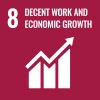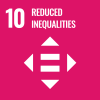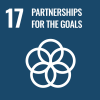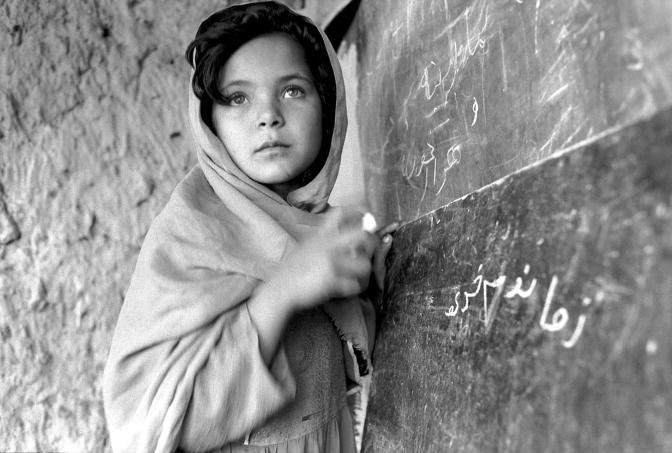
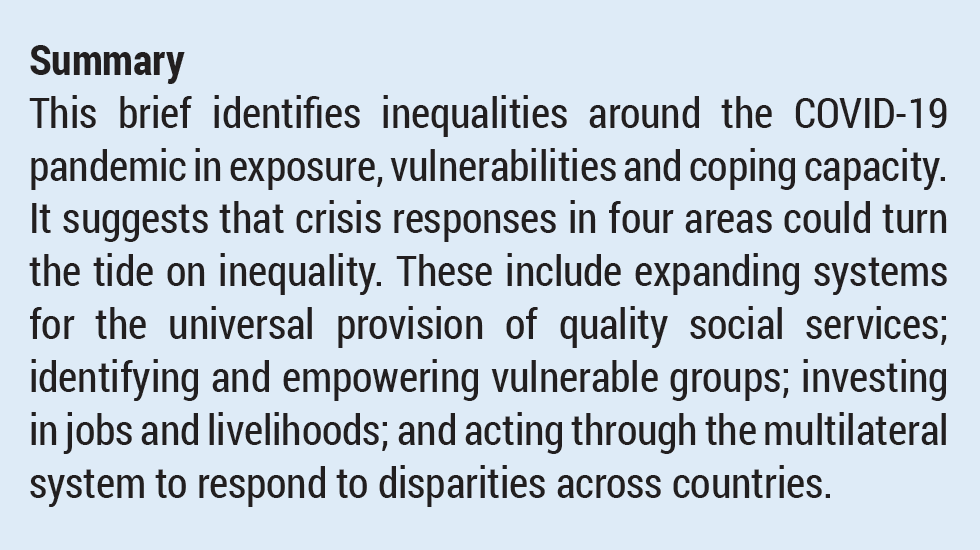 Even as all of humanity confronts COVID-19, it is becoming increasingly clear that pre-existing inequalities along various dimensions are differentiating its impact. At the same time, inequalities within and across countries also stand to widen because of the crisis. Such outcomes are not inevitable: past experience shows that sufficiently bold measures that put people at the centre of crisis response and recovery can lead to better, more equitable and resilient outcomes for all.
Even as all of humanity confronts COVID-19, it is becoming increasingly clear that pre-existing inequalities along various dimensions are differentiating its impact. At the same time, inequalities within and across countries also stand to widen because of the crisis. Such outcomes are not inevitable: past experience shows that sufficiently bold measures that put people at the centre of crisis response and recovery can lead to better, more equitable and resilient outcomes for all.
Living and working conditions determine the chances of infection
Interventions that reduce the chances of being infected, such as social distancing, are more difficult where population densities are high, as in major urban centers with packed transit systems, or for people living in small, crowded households, slums, migrant worker housing or refugee camps. Frequent handwashing is challenging for the 3 billion people without basic handwashing facilities at home (World Health Organization, 2020a). Poorer people, and those from marginalized groups are more likely to live in these conditions. In many developing countries, this can include much of the population.
Occupations requiring frequent human contact, and which must be carried out even during a pandemic-induced lockdown—for example, those providing services such as health care, public transit, and food and grocery supplies—are also associated with a higher risk of infection. Many (though not all) of these occupations are disproportionately carried out by poorer people. Smartphone location data show that people with lower incomes have remained more mobile under social distancing guidelines than those with higher incomes, who can more easily stay away from densely populated areas.
Vulnerabilities to covid-19 are unequal
Knowledge about the biological pathways through which COVID-19 attacks the body is still evolving. However, the empirical data to date show that, once people are infected, outcomes tend to be more severe for older adults, men, and those with weaker immune systems or pre-existing health conditions such as obesity, diabetes and cardio-vascular disease.
Several of these pre-existing conditions tend to occur more frequently in disadvantaged groups, who may also be less likely to have access to quality health care, or more likely to live and work in conditions that increase the risk of infection. In the United States, for example, African-Americans—known to have higher rates of pre-existing health conditions and poverty—comprise 21.2 per cent of COVID-19 deaths and 28.9 per cent of known cases despite comprising only 13 per cent of the population (Centers for Disease Control and Prevention, 2020). Indigenous peoples, often living in isolated communities that lack access to health care and with high rates of pre-existing conditions, are also particularly vulnerable—in Brazil during the 2009 H1N1 influenza pandemic, the death rate of indigenous peoples was 4.5 times higher than among the general population (Zavaleta, 2020).
Coping strategies have unequal impacts
Countries have adopted various forms of travel restrictions and social distancing to “flatten the curve”, but these in turn produce unequal impacts across groups. Those in low-wage jobs with limited savings or access to social protection are bearing the brunt of the economic collapse. The International Labour Organization (ILO) (2020a) estimates that almost 38 per cent of workers are in sectors at high risk of economic decline and only 45 per cent have any social protection coverage.
In general, the already disadvantaged, such as women, children, persons with disabilities and indigenous people, stand to see their conditions worsen disproportionately through increasing poverty, reduced access to services and heightened vulnerability within the household.
Women, for instance, are mostly employed in the informal sector—70 per cent globally and over 90 per cent in developing countries, while single mothers and older women are already more likely to be poor than men in similar circumstances. Prolonged stays at home can increase the burden of care work, as well as make it harder to escape domestic violence.
With school closures in over 190 countries as of date, children’s education is at risk, with existing differences being aggravated by inequalities in access to remote learning options. Malnutrition is also a threat for the approximately 370 million children who rely on school meals. Staying at home can itself be a risk factor—during the Ebola outbreak, school closures were associated with spikes in child labour, neglect, sexual abuse and teenage pregnancies.
Social distancing and isolation stand to make it even harder to access critical services for those reliant on them, such as older persons and people with disabilities. Individuals in poor health may delay seeking medical care, further aggravating their condition.1
1 Companion pieces in this series examine the situation of vulnerable groups in greater detail.
Inequalities across countries are also evolving
Several of the factors identified above also contribute to inequalities across countries. Almost 40 per cent of all countries have fewer than 10 doctors per 10,000 people compared to 30 per 10,000 people on average in high-income countries (World Health Organization, 2020b). In some least developed countries, the total number of ventilators available for an entire population is in the single digits (International Rescue Committee, 2020). These countries are also among those with less comprehensive social protection systems—and are therefore less able to provide assistance to those whose livelihoods are affected.
Lack of fiscal space is a major barrier for many countries that need to urgently expand emergency services and roll out stimulus plans to counter the economic destruction of the crisis. With COVID-19, capital flight from developing countries is high and commodity prices are dropping, leaving countries severely constrained by debt servicing obligations which stand in the way of response efforts.
Over the past decades, most countries have made progress in eradicating fundamental human deprivations. Recent estimates of the impact of COVID-19, however, anticipate sharp rises in extreme poverty and hunger. Difficulties in carrying out vaccinations and community-based health measures also threaten a recurrence of diseases such as measles and malaria. As a result, this convergence in minimal standards of living could stall or be reversed, thereby widening inequalities.
Past crises can inform covid-19 responses
Evidence to date indicates that the crisis could result in increasing levels of poverty and inequality, with impacts lasting for years. But this is not inevitable. The long-term outcomes of COVID-19 will depend on how policymakers respond. Historical evidence from other major crises shows that, when governments stepped up health care and social protection, including measures to preserve wage income, inequality fell after the initial shock.
Measures to bolster public services were put in place following the Great Depression and World War II. During the Great Recession, Latin America reduced inequality levels through a combination of increases in labour income and expanding social protection systems. More recently, countries like Costa Rica and Thailand have increased public spending toward universal health systems; while Ghana and Indonesia have expanded social protection. Initiatives such as these can be built upon to address inequalities following COVID-19.
Much like with earlier crises, COVID-19 is a fork in the road. An insufficient response to the crisis and its economic and social impacts will likely deepen inequality, intensifying public discontent and weakening trust in institutions. However, this tragedy ushers in new awareness of the social and economic risks of deficient social protection systems and inadequate public services. It also underscores the importance of collective action and global collaboration. The crisis can therefore lead to the transformational changes needed to build more equitable societies and better align policy frameworks with the aspirations of the 2030 Agenda for Sustainable Development.
Actions in four key areas can turn the covid-19 crisis into a transformative moment for reducing inequality
Expand systems for the universal provision of quality public services
COVID-19 has been a stress test for public services and social protection systems, and many countries have come up short, albeit in different ways. In countries with strong health and social protection systems, lacunae have emerged in their ability to respond rapidly to novel circumstances, meet sudden surges in demand, maintain universal access, and deal with population specific challenges. In others, the pandemic has underscored the need to accelerate the deployment of such systems. It has also highlighted that access to services—such as broadband internet or hotlines for domestic violence prevention— must be treated as essential for preventing inequalities in well-being.
There are important long-term take-aways from this crisis. First, countries should accelerate the setting up of systems to ensure universal provision of quality services such as health care, education, sanitation and social protection. Although comprehensive social protection systems require significant investment up-front, the recurrent costs of providing basic social protection floors are affordable in most countries.
Second, universal systems must be sensitive to differences between different population groups. Barriers to accessing these services—such as inability to pay, discrimination and stigma—must be identified and removed.
Third, comprehensive preparedness and planning are needed to build agility and be ready for a range of emergencies with surge response capacities. Consistent delivery of services (such as primary health care and quality education) is key to improving resilience.
Finally, sufficient fiscal space should be maintained through counter-cyclical policies, sustainable debt management, eradicating tax evasion and avoidance as well as illicit financial flows and ensuring fair, equitable and efficient taxation of economic activities. Periods of lower interest rates that have historically followed pandemics may be opportunities for making the necessary capital investments.
Identify and empower vulnerable groups
Widespread testing for the virus and the availability of adequately disaggregated data is necessary to identify inequalities in exposure, vulnerability and outcomes. Longer term investments in building data collection capacities, including through civil registration systems are also essential.
Such evidence enables response strategies to address the differentiated impacts of COVID-19 among population groups and develops capacities for similarly differentiated responses in the future. Disaggregated and widely communicated data also serve to empower people, equipping them with vital information to participate in public dialogue and policy-making, and enabling accountability.
Information needs to be communicated through channels that directly reach the most vulnerable with support that is targeted to their needs. Some countries are successfully using emergency text message systems and SMS location-based messaging to provide important information about emergency services and health advice. Expanding household internet coverage as much as possible in the short-term and comprehensively in the long-term will also help to ensure access to public health information, while supporting distance learning for the over 1.5 billion children currently out of school due to the pandemic.
Invest in jobs and livelihoods
Workers, including about 1.6 billion in the informal sector—half the world’s workforce—are at high risk of losing their livelihoods due to COVID-19 (International Labour Organization, 2020b). Previous economic downturns and recessions have ended up widening income inequality—in many countries, lower income jobs were added back at a slower rate during recoveries.
Chances of such an outcome can be minimized in the current context if there is an emphasis on protecting jobs or restoring them safely, creating jobs in emerging, more resilient and sustainable economic sectors and, looking ahead, preparing the workforce with needed skills.
In the short-term, income and employment protection must be accompanied by facilitating a safe return to service occupations, including those deemed essential. Governments and businesses must introduce the necessary protocols, including providing protective equipment, testing and medical care. Skills of teachers adjusting to new modes of instruction also need to be built up, creating additional employment options. In all countries, the self-employed and those working for small and medium enterprises can be supported through low-interest micro loans and transfer programmes.
In the longer term, as countries expand the provision of quality services, there will be opportunities for generating large numbers of stable jobs in health care and education for example. As countries implement fiscal stimulus packages, and potentially take the opportunity to strengthen “green” sectors, new avenues for employment will be created, and must be matched with developing skills among those making the transition.
Act through the multilateral system to respond to disparities across countries
The international community must strengthen coordination to respond effectively to disparities across countries. The United Nations can play a lead role in facilitating this coordination—engaging all stakeholders and fostering partnerships to build developing countries’ social sectors in ways that reduce inequalities.
Steps decisionmakers can take to support COVID-19 response efforts in the most vulnerable countries include removing restrictions on trade in goods essential for fighting the pandemic and for ending hunger; temporarily suspending debt service payments; and allocating Special Drawing Rights from the International Monetary Fund to shore up international liquidity to help defuse rising financial market tensions.
Reducing the cost of remittances could help spur recovery after the crisis and greatly assist in restoring household consumption in recipient countries. Incentives are also needed to encourage increases in foreign direct investment to support recovery efforts and social assistance. And critically, existing international development cooperation commitments must be met, and the supply of concessional finance increased.
High and growing inequality has marked the first part of the 21st century as a central challenge for the 2030 Agenda and the sustainability of human well-being. Large-scale, coordinated responses to the COVID-19 crisis, based on the best available evidence, can turn things around by building systems that strengthen resilience and enable all people to fulfil their potential in dignity and equality.
 Welcome to the United Nations
Welcome to the United Nations
